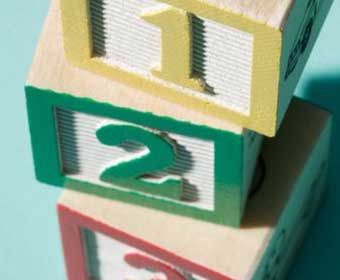Last week analysts predicted that global mobile data revenues will rise from an estimated $208bn in 2009 to over $330bn in 2013, driven by explosive growth in smartphones and dongles. But with legacy internet addresses almost exhausted, the internet community is running out of time to prepare for future demand.
January 19, 2010

Last week analysts predicted that global mobile data revenues will rise from an estimated $208bn in 2009 to over $330bn in 2013, driven by explosive growth in smartphones and dongles. But with legacy internet addresses almost exhausted, the internet community is running out of time to prepare for future demand.
At present, 2G mobile technologies still account for 90 per cent of the world’s subscriptions, but by the end of 2012, this figure will fall to 70 per cent, and by the end of 2014, over half the world’s 6.7 billion mobile subscriptions will be moving onto 3G and 3.5G+ technologies giving an enormous number of mobile devices internet connectivity, according to Informa.
But this week the Number Resource Organization (NRO), the official representative of the five Regional Internet Registries (RIRs) tasked with ensuring the fair and equitable distribution of iInternet number resources, said that less than 10 per cent of available IPv4 addresses remain unallocated.
“With less than 10 per cent of the entire IPv4 address range still available for allocation to RIRs, it is vital that the internet community take considered and determined action to ensure the global adoption of IPv6,” said Axel Pawlik, Chairman of the NRO. “The limited IPv4 addresses will not allow us enough resources to achieve the ambitions we all hold for global internet access. The deployment of IPv6 is a key infrastructure development that will enable the network to support the billions of people and devices that will connect in the coming years,” he said.
There are currently two versions of IP in use, IPv4 and IPv6. IPv6 includes a modern numbering system that provides a much larger address pool than IPv4. With so few IPv4 addresses remaining, the NRO is urging all internet stakeholders to take immediate action by planning for the necessary investments required to deploy IPv6.
According to the organisation, IPv6 allocations increased by nearly 30 per cent in 2009, suggesting that the problem is being addressed by the internet and communications industry. In a white paper on the subject last year, leading handset vendor Nokia said that when cellular devices come online in a mass, only IPv6 will be able to provide a sufficient number of addresses.
“As the mobile broadband becomes increasingly available, sharing of the mobile broadband connection to other devices, such as PCs, is becoming an increasingly attractive use case. In the IPv4 domain, sharing can be implemented by using network address translators on a sharing device, but for IPv6 more advanced solutions should be used in order to avoid introducing IPv6 network address translators. Cellular operators should take this use case into consideration when designing and building their IPv6 networks,” Nokia said.
About the Author(s)
You May Also Like








.png?width=300&auto=webp&quality=80&disable=upscale)


_1.jpg?width=300&auto=webp&quality=80&disable=upscale)


.png?width=800&auto=webp&quality=80&disable=upscale)